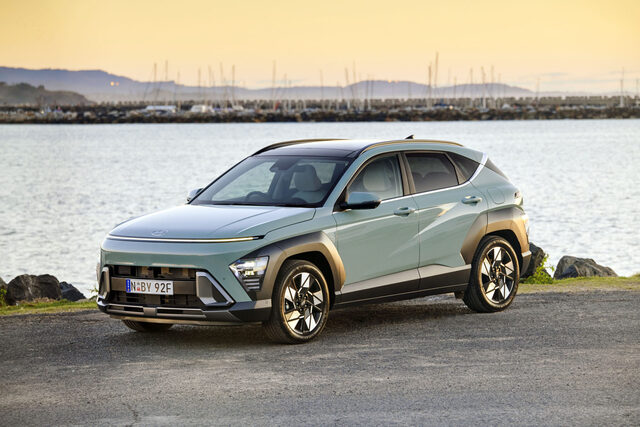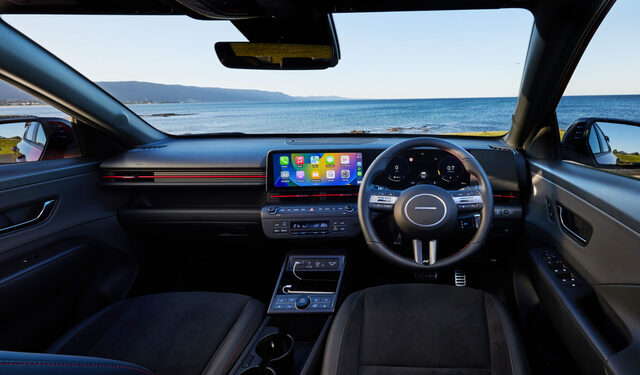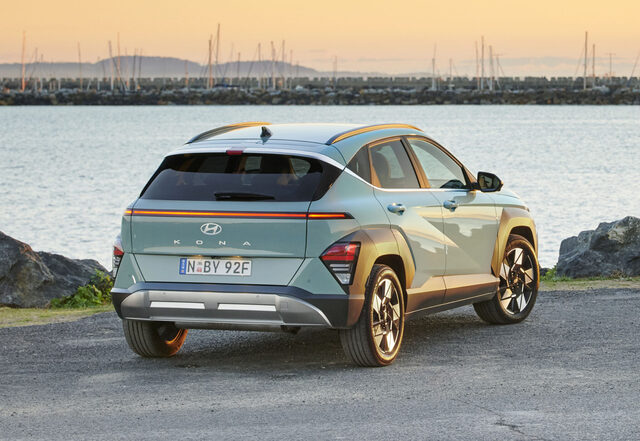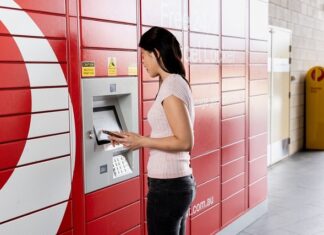
With a dim start to electrification of the automobile Down Under, due considerably to the snail-pace roll-out of charging infrastructure to keep up, many car manufacturers have doubled down on petrol/electric hybrid models.
Latest switch-on is Hyundai with its new Kona SUV range consisting initially of internal combustion engine vehicles and totally electric powered variants.
The small sports utility hybrid vehicle makes use of a 1.6 litre petrol engine and six-speed dual clutch transmission with a 1.32 kwh battery pack and electric motor, designed to deliver a driving experience similar to a conventional ICE vehicle.
With an exceptional 3.9 litres per 100 kilometres fuel consumption (91 RON) on the combined cycle claimed by the maker, the full 38 litre petrol tank should give a careful driver almost 1000 kilometres of range.
As well as standard features such as AM/FM/DAB+, wireless Apple CarPlay/Android Auto connectivity, Hyundai Bluelink with calendar integration, Over-The-Air (OTA) updates, USB-C input and Google Fast Pair Service for Android across the Kona range, the test car was specced up to Premium level.
This level added Bluelink connected satellite navigation, Bluelink live traffic updates, voice control, SMS playback capability, split-screen function and voice memo function. Options on Premium include wide-glass sunroof at $1500, metallic mica paint $595 and Light Shale Grey/Sage Green interior $295.
The Kona N Line Hybrid is covered by Hyundai’s five-year unlimited kilometre warranty, with battery warranty of eight years or 160,000 kilometres.
STYLING
The Kona hybrid follows on the futuristic design chops of the all-electric variant. Standout features of the Neoteric (aka modern) Yellow test car included light strip front and back, twin alloy tipped exhaust pipes, N Line body-coloured cladding, N Line front bumper with gloss black front bumper insert, N Line side skirts and N Line-exclusive 18-inch alloy wheels.
There’s a black N Line wing-type spoiler and mirror caps, N Line rear bumper, plus N Line aluminium badging. Dual projector beam headlights combine with LED indicators, black beltline moulding and ‘seamless horizon’ centre LED positioning light.
INTERIOR
With wider-opening doors, back seat space – 77mm more leg room and 11 mm extra headroom – is well ahead of the previous Kona. Second-row shoulder room (1402mm) is also among the largest in class.
Buttons and dials dominate the climate and drive mode controls, so it’s simple to hop into Sport, or adjust the climate. Stacks of storage space is partly the result of the lack of a transmission tunnel with its old-style T-bar gear lever, leaving room for an open centre console.
All-new Kona’s optional N Line pack interior offers leather appointed seating with Alcantara inserts, along with red highlights and N logos. There’s an N Line steering wheel, dark metal door handles, plus leather dashboard tray and highlights. Black headlining and pillar trims may seem a bit too gloomy for some.
The boot has room for 470 litres of cargo with the rear seat backs raised, blowing out to 1421 litres with the backs folded (almost) flat. A temporary spare wheel can be found under the boot base, which is height adjustable.
INFOTAINMENT
The Kona follows its Hyundai cousins with a version of the 12.3-inch dual-screen high-resolution full digital set-up. Pleasingly, climate control air-con is via a series of buttons and knobs on the centre stack, not the touchscreen.
Over The Air software updates lets users perform remote software and firmware updates for key systems, without the need to visit a service centre.
ENGINES/TRANSMISSIONS
New for Australia, the Kona hybrid powertrain combines a 1.6-litre naturally aspirated petrol engine with an electric motor plugged into a 1.32 kWh battery pack. The electric motor produces 32 kW of power and 172 Nm of torque, the combined system putting out 104 kW and 265 Nm. The package is mated with a six-speed dual-clutch transmission.
SAFETY
This is where the Hyundai SmartSense safety system comes into the picture with functions including autonomous emergency braking (with pedestrian and cyclist detection), as well as AEB rear.
Also included are driver attention monitoring, blind-spot monitoring and assist, lane keep assist, safe exit warning, plus parking sensors.
And to help further in pedestrian safety, the Kona Hybrid, with its almost silent powertrain, features a Virtual Engine Sound System which generates a futuristic sound for pedestrians to hear through a speaker at the front of the vehicle. A further chime is ‘played’ when the car is reversing.
There are seven airbags in Kona, including a front centre side airbag. Mounted in the left of the driver’s seat backrest, it can prevent or reduce the severity of injuries caused by coming together of front occupants, or collisions between occupants and the interior during a side impact.
DRIVING
The dash-mounted push-button start fires up the all-but silent electric motor, to be joined by the 1.6-litre petrol engine, in an ultra-smooth transition at around 20 to 30 km/h when needed for optimum performance – a great help in town traffic.
It’s not the most powerful vehicle but a heavy-footed take-off can have the Kona’s front wheels spinning in the wet, trust me. Paddles behind the steering wheel allow the driver to get in on the action of the six-speed double-clutch tranny. Oh, and can deliver different levels of regenerative braking.
Claimed fuel economy is a miserly 3.9 litres per 100km on the combined urban/highway cycle. On test the Kona accrued a fuel consumption figure of 5.1 litres per 100 kilometres over a week’s work on a range of road conditions.
Traffic sign recognition and warning sounds like a good idea but the Kona goes a step too far for my liking, not only issuing a visual warning but beeping too. Frequent changes of speed limit can come up with an incessant ‘one-note’ samba. More annoying than helpful.
Also, the system is inclined to pick up the speed limit of an on or off-ramp while still on the motorway and on test was wont to hold on to a car park 10km/h speed limit when the car was well on its way down the road.
SUMMARY
With skinflint fuel usage without the worry of running out of ‘juice’ it’s a win/win situation with the Kona N Line petrol/electric hybrid SUV. Good looks, space and heaps of high-tech tackle add to the appeal, as does the $40K-plus sales price.
RATINGS
Looks – 8
Performance – 5
Safety – 7
Thirst – 7
Practicality – 7
Comfort – 5
Tech – 7
Value – 8








